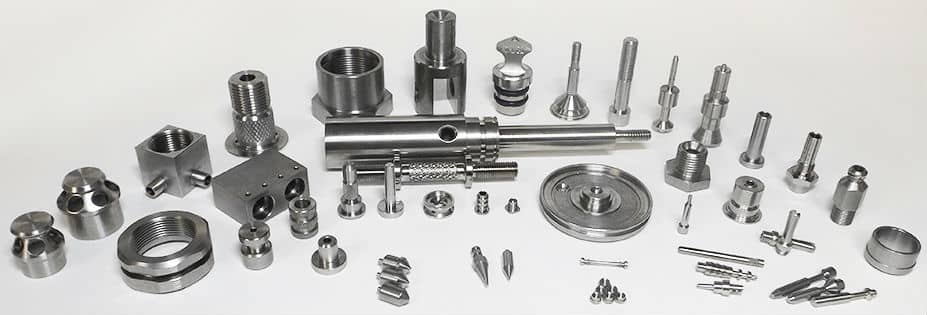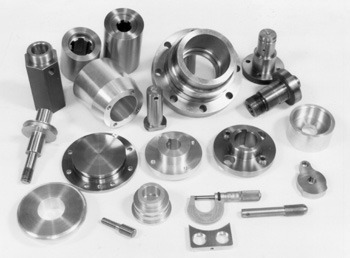1. What kind of steel is stainless steel?
Stainless steel is a type of steel. Steel refers to steel that contains less than 2% carbon (C), and iron is more than 2%. The addition of chromium (Cr), nickel (Ni), manganese (Mn), silicon (Si), titanium (Ti), molybdenum (Mo) and other alloying elements in the smelting process improves the performance of the steel and makes the steel corrosion-resistant (That is, no rust) is what we often call stainless steel.
2. Why are there different steel grades for stainless steel?
In the smelting process of stainless steel, due to the different types of added alloying elements, the amount of addition of different varieties is different. Their characteristics are also different, and different steel grades are added to distinguish them.
3. What kind of stainless steel is not easy to rust?
There are three main factors affecting stainless steel corrosion:
1: The content of alloying elements, generally speaking, the content of chromium in 10.5% steel will not rust easily. The higher the content of chromium and nickel, the better the corrosion resistance. For example, the content of nickel in 304 material is 8-10%, and the content of chromium reaches 18-20%. Such stainless steel will not rust under normal circumstances.
2: The smelting process of the manufacturer will also affect the corrosion resistance of stainless steel. A large stainless steel plant with good smelting technology, advanced equipment and advanced technology can guarantee the control of alloying elements, the removal of impurities, and the control of the cooling temperature of the billet, so the product quality is stable and reliable, the internal quality is good, and it is not easy to rust. On the contrary, some small steel mills have backward equipment and technology. During the smelting process, impurities cannot be removed, and the products produced will inevitably rust.
3: External environment, dry and ventilated environment is not easy to rust. And the air humidity is high, continuous rainy weather, or the environment with high pH in the air is easy to rust. 304 stainless steel, if the surrounding environment is too bad, it will rust.

4. Stainless steel is without magnetism, is it good stainless steel without magnetism? If the microstrip is magnetic, isn’t it 304?
Many customers go to the market to buy stainless steel and bring a small magnet with them. Without magnetism, there will be no rust. In fact, this is a wrong understanding.
The non-magnetic stainless steel strip is determined by the structure of the structure. During the solidification process, the molten steel will form stainless steel with different structures such as “ferrite”, “austenite” and “martensite”. “Essential” and “Martensitic” stainless steels are all magnetic. The “austenitic” stainless steel has good overall mechanical properties, process performance and weldability, but only in terms of corrosion resistance, the magnetic “ferritic” stainless steel is stronger than the “austenitic” stainless steel.
At present, the so-called 200 series and 300 series stainless steels with high manganese content and low nickel content in the market are not magnetic, but their performance is very different from that of 304 with high nickel content. Instead, 304 has been stretched, annealed, polished, cast, etc. Process treatment will also be micro-magnetic, so it is a misunderstanding and unscientific to judge the quality of stainless steel without magnetism.
5. Why does stainless steel rust?
When brown rust spots (spots) appear on the surface of stainless steel, people are surprised: “Stainless steel does not rust, and rust is not stainless steel. It may be a problem with the steel.” In fact, this is a one-sided misconception about the lack of understanding of stainless steel. Stainless steel can also rust under certain conditions.
Stainless steel has the ability to resist atmospheric oxidation, that is, non-rust, and it also has the ability to resist corrosion in media containing acid, alkali and salt, that is, corrosion resistance. However, the size of its anti-corrosion ability varies with the chemical composition of the steel itself, mutual status, use conditions and environmental media types. Such as 304 material, in a dry and clean atmosphere, has absolutely excellent corrosion resistance, but it is moved to the beach area, in the sea fog containing a lot of salt, it will quickly rust. Therefore, it is not any kind of stainless steel, which is corrosion resistant and does not rust at all times.
Stainless steel relies on a very thin, strong, dense and stable chromium-rich oxide film (protective film) formed on its surface to prevent oxygen atoms from continuing to infiltrate and continue to oxidize to obtain corrosion resistance. Once for some reason, the film is continuously destroyed, the oxygen atoms in the air or liquid will continue to infiltrate or the iron atoms in the metal will continue to separate out, forming loose iron oxide, and the metal surface will also be continuously affected. 
There are many forms of damage to this surface film, and the following are more common in daily life:
- The surface of stainless steel is stored with dust containing other metal elements or attachments of heterogeneous metal particles, which are wet. In the air, the condensed water between the attachment and the stainless steel connects the two to form a micro battery, triggering an electrochemical reaction and destroying the protective film, which is called electrochemical corrosion.
- Organic juice (such as melons, vegetables, noodle soup, sputum, etc.) adheres to the surface of stainless steel. In the presence of water and oxygen, it forms organic acid, which will corrode the metal surface for a long time.
- The surface of stainless steel adheres to acid, alkali and salt substances (such as alkali water and lime water spray test on decoration walls) causing local corrosion.
- In polluted air (atmosphere containing a lot of sulfides, oxides, and hydrogen oxides), contact with condensed water will form sulfuric acid, nitric acid, and acetic acid liquid spots, causing chemical corrosion.
The above conditions can cause damage to the protective film on the stainless steel surface and cause corrosion.
Therefore, to ensure that the metal surface is permanently bright and not rusted, we recommend:
① The surface of decorative stainless steel must be cleaned and scrubbed frequently to remove attachments and eliminate external factors that cause corrosion.
② There is a kind of stainless steel made of 201 and 202 on the market that is easy to rust in coastal areas and is suitable for use in an environment without industrial pollution and air corrosion.
③ Use 304 stainless steel in coastal areas, which can resist seawater corrosion.
6. Once the stainless steel has rust spots, how to deal with it?
a) Chemical method:
Use pickling paste or spray to assist the re-passivation of the rusted parts to form a chromium oxide film to restore corrosion resistance. After pickling, in order to remove all contaminants and acid residues, it is very important to rinse with clean water. After all treatments, use polishing equipment to polish again, and then seal with polishing wax. For those with slight rust spots, you can use 1:1 gasoline and engine oil mixture to wipe off the rust spots with a clean cloth.
b) Mechanical method:
Sandblasting, using glass or ceramic particles to clean, submerge, brush and polish. It is possible to use mechanical methods to wipe off the pollution caused by the previously removed materials, polishing materials or oblique materials. All kinds of pollution, especially foreign iron particles, can become a source of corrosion, especially in humid environments.
Therefore, mechanically cleaned surfaces should be properly cleaned under dry conditions. The use of mechanical methods can only clean the surface, and cannot change the corrosion resistance of the material itself. Therefore, it is recommended to re-polishing with polishing equipment after mechanical cleaning and sealing with polishing wax.


